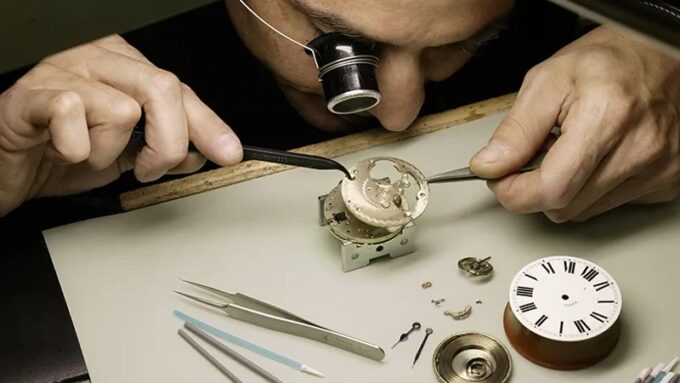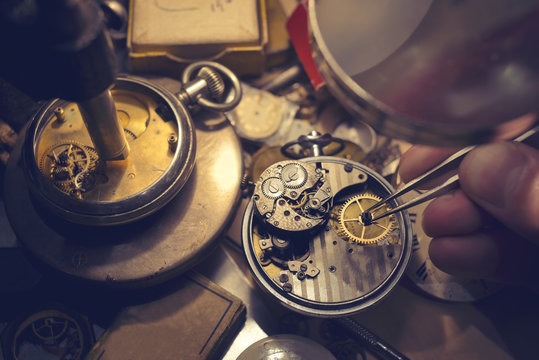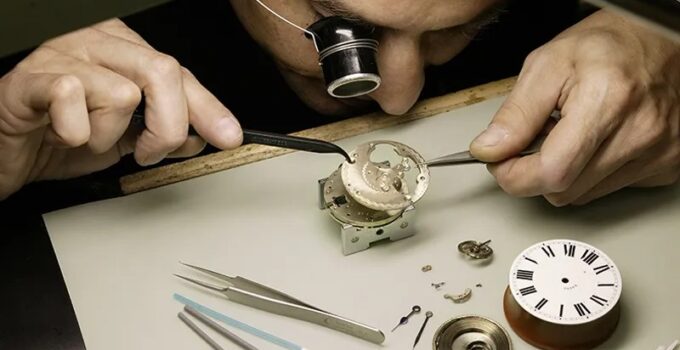The world’s finest watches are not mere instruments for telling time; they are miniature works of mechanical art. Each piece represents years of expertise, handcraft, and innovation distilled into a wrist-sized marvel.
These masterpieces of mechanical art stand at the intersection of engineering, design, and tradition, showcasing what human skill can achieve without relying on digital technology. In today’s luxury market, the most respected names in watchmaking prove that perfection still comes from gears, springs, and hands, not microchips.
The Essence of Haute Horlogerie

Source: watchpro.com
At its core, haute horlogerie, the art of fine watchmaking, is about precision and beauty. Every screw, jewel, and bridge is placed not only for function but also to demonstrate mastery. Traditional watchmakers like Patek Philippe, Vacheron Constantin, and Audemars Piguet are revered because they uphold centuries-old methods while integrating modern innovations like tourbillons, minute repeaters, and perpetual calendars.
The finest timepieces are entirely hand-assembled, with tolerances often measured in microns. A single movement can have over 400 individual components, each polished, beveled, and finished by hand. This dedication to detail elevates mechanical watches from everyday accessories into collectible artworks that gain value with time.
Where Art Meets Engineering
The appeal of a truly great mechanical watch lies in its duality. It is both a functional machine and a symbol of creative expression. Consider the intricate skeletonized movements of Roger Dubuis or the celestial dials of Jaeger-LeCoultre’s Master Grande Tradition series. These are not mass-produced objects; they are wearable sculptures.
For collectors, owning one of these luxury watches is a form of connection with craftsmanship itself. Modern connoisseurs often turn to specialized platforms like luxury watches marketplaces to buy, sell, or appraise rare pieces from top brands. Such markets thrive because fine mechanical watches retain prestige and financial value long after purchase, a phenomenon unique in the consumer goods world.
The Holy Trinity of Watchmaking
Every enthusiast recognizes the “Holy Trinity” of Swiss horology: Patek Philippe, Audemars Piguet, and Vacheron Constantin. These three houses have defined the standards of precision and prestige for more than a century.
| Brand | Signature Model | Key Innovation | Craftsmanship Focus |
| Patek Philippe | Grand Complications | Perpetual Calendar, Minute Repeater | Traditional finishing, heritage detailing |
| Audemars Piguet | Royal Oak | Iconic octagonal design, integrated bracelet | Avant-garde design with high complications |
| Vacheron Constantin | Overseas / Patrimony | Ultra-thin movements | Artistic engraving and traditional balance wheels |
Each of these manufacturers operates its own ateliers, where watchmakers hand-polish bridges, engrave plates, and adjust escapements by eye. The result is not just precision but emotional resonance, something a quartz movement could never replicate.
Independent Watchmakers and Modern Innovation

Source: trilogyjewellers.com
Beyond the big names, independent ateliers have reshaped the landscape of modern horology. Brands like F.P. Journe, Greubel Forsey, and MB&F push mechanical design into experimental territory.
F.P. Journe’s Chronomètre à Résonance uses twin balances oscillating in harmony to improve timekeeping accuracy, a concept rooted in 18th-century physics but refined for the 21st century.
Meanwhile, Greubel Forsey treats each watch as a mechanical sculpture, using multi-axis tourbillons and inclined balance wheels that appear to defy gravity. MB&F, on the other hand, reimagines traditional watchmaking through futuristic designs that resemble miniature spacecraft.
These independents are proof that even in a digital age, the future of mechanical art is far from obsolete.
The Hidden Beauty Inside the Movement
One of the most striking features of a mechanical masterpiece lies beneath its sapphire crystal caseback. The movement, the heart of the watch, displays a level of artistry rarely seen in industrial design. Components are beveled, brushed, and polished using techniques like Côtes de Genève, anglage, and perlage. These traditional decorations don’t affect timekeeping accuracy; they simply exist to honor beauty for its own sake.
Collectors often spend hours admiring these details under magnification. The play of light on the gears and bridges evokes a sense of tranquility and appreciation for mechanical harmony. It is this invisible beauty that separates a fine watch from a merely expensive one.
The Revival of Handcrafted Techniques

Source: ideal-tek.com
While computer-assisted manufacturing has entered most industries, high-end watchmaking remains loyal to handcraft. Many elite workshops limit production to just a few hundred pieces a year. Techniques such as hand-engraving, guilloché dial etching, and enamel painting are preserved by artisans whose skills are passed down through generations.
For example, Breguet, founded in 1775, still applies guilloché patterns on engine-turned rose lathes from the 19th century. Each dial can take several days to complete, requiring steady hands and perfect timing. Similarly, Jaeger-LeCoultre’s Métiers Rares division specializes in miniature enamel paintings, tiny works of art measured in millimeters.
Complications: The Peak of Mechanical Creativity
In watchmaking, a “complication” is any feature beyond a simple time display. The most admired complications demonstrate both technical brilliance and aesthetic refinement:
| Complication | Description | Example |
| Tourbillon | Rotating escapement that counters gravity for improved accuracy | Breguet Classique Tourbillon Extra-Plat |
| Minute Repeater | Chimes the time on demand with tiny hammers and gongs | Patek Philippe 5078R |
| Perpetual Calendar | Automatically adjusts for leap years | Audemars Piguet Royal Oak Perpetual Calendar |
| Moonphase | Displays the current phase of the moon | Vacheron Constantin Patrimony Moon Phase |
Each of these innovations adds complexity, but also emotional depth. A tourbillon spinning beneath the dial or a minute repeater chiming on the wrist connects the wearer to centuries of ingenuity and craft.
Collecting and Investment Value
Unlike most luxury items, high-end mechanical watches often appreciate due to limited production, historical significance, and enduring demand, creating a thriving secondary market. Vintage Patek Philippe references, for instance, regularly fetch millions at auction. Collectors see these pieces as tangible assets, movable art with measurable financial potential.
Platforms that specialize in authenticating and valuing such pieces play an important role. Whether trading a rare Rolex Daytona or a Vacheron Constantin Traditionnelle, trust and transparency are paramount. Expert evaluation, provenance documentation, and secure transactions ensure that these masterpieces maintain both prestige and liquidity.
Why Mechanical Watches Still Matter

Source: stock.adobe.com
In an age where smartphones synchronize with atomic clocks, a mechanical watch remains defiantly analog. It doesn’t need a battery or internet connection to function; it depends solely on human energy and precision mechanics. Each tick reflects the work of an artisan who shaped, polished, and calibrated hundreds of parts by hand.
Owning such a watch means more than tracking time; it symbolizes respect for human ingenuity. It is an heirloom, a statement, and often a lifelong companion. The artistry behind these pieces explains why collectors across generations continue to seek them out, ensuring that mechanical watchmaking not only survives but thrives in the digital era.
Final Reflection
Mechanical watches are proof that technology and artistry can coexist in perfect harmony. They embody centuries of craftsmanship, a relentless pursuit of perfection, and a respect for tradition that few industries can match. Every component, no matter how small, carries the touch of a human hand and the weight of history.
In the end, these masterpieces are not about status or luxury alone; they represent the timeless dialogue between precision and passion. From Patek Philippe’s grand complications to the avant-garde forms of MB&F, each mechanical watch tells a story of patience, vision, and devotion that no machine can replicate.







